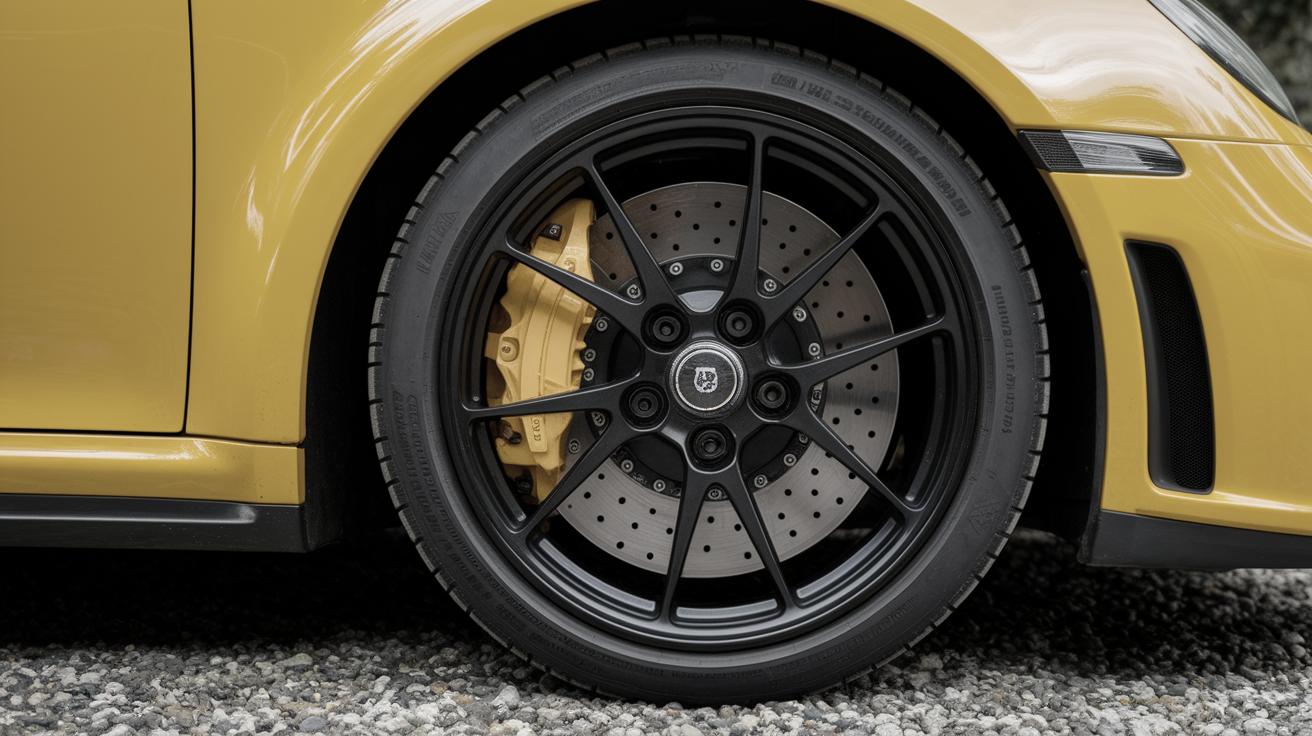<br />
How to Renovate a Vintage Car<br />
How to Renovate a Vintage Car
Renovating a classic car is a cherished endeavor for enthusiasts worldwide, combining a love for history, mechanical mastery, and pure automotive passion. This article guides you through what defines a classic car, the rich history behind American and European vehicles, and why restoration is crucial. We will delve into the intricacies of selecting the right car, understanding the restoration steps, and overcoming common challenges. You’ll also learn about the legal nuances in this process. For those aspiring to restore these historic icons, this comprehensive guide provides an insightful journey through the art and science of classic car restoration, leading you to not just rebuild history but to drive into a future where heritage thrives.
What’s Considered A Classic Car
The term “classic car” often varies in definition depending on personal preferences, geographic locations, and cultural references. Typically, a classic car is one that’s at least 25-30 years old, signifying a period long enough for the model to have piqued historical interest and sentimentality. These vehicles are celebrated for their design, engineering feats, and impact on the automotive world.
Ultimately, what defines a classic car is its embodiment of an era’s style and technology, alongside the unique stories embedded into every curve and component. Collectors and enthusiasts often define classics not just by age, but by the car’s significance in automotive history and its influence over car manufacturing trends.
The History of Classic Cars: a Journey Through Time
History of American Cars
American classic cars are often synonymous with the post-war economic boom, reflecting the prosperity and optimism of the era. This period saw the rise of iconic brands like Ford, Chevrolet, and Pontiac, which embraced bold design and powerful V8 engines. The muscle car trend emerged in the 1960s and 1970s, led by the Mustangs and Camaros that exuded raw power and aggressive styling.
During the earlier parts of the 20th century, American automakers pioneered assembly line manufacturing and suburban mobility, making cars accessible to the average American family. This democratization of driving not only redefined transportation but also solidified the car’s status as a cultural symbol of freedom and progress.
History of European Cars
European classic cars offer a captivating narrative of craftsmanship and elegance. Renowned for their precision engineering, brands like Mercedes-Benz, Jaguar, and Ferrari became synonymous with luxury and performance. In Europe, the emphasis was often on quality over quantity, creating vehicles that were as much about art as they were about engineering.
Post-war Europe saw a resurgence in car manufacturing, with innovations in aerodynamics and style. Sports cars, such as the Porsche 911, captured the essence of speed and sophistication, while compacts like the Volkswagen Beetle revolutionized city transportation, becoming global icons in the process.
The Value of Classic Cars: Why Restoration Matters
Restoring classic cars goes beyond reviving their aesthetic appeal; it’s about preserving cultural heritage. Each restoration project respects and honors the innovation and artistry of automotive engineering from previous decades. By breathing new life into classic cars, enthusiasts preserve history for future generations while showcasing the unique challenges and beauty of the era.
Moreover, a well-maintained classic car appreciates in value over time. These vehicles can act as financial investments, bringing joy not only through driving experiences but also in potential resale opportunities. Restoration allows individuals to partake in a hands-on journey that burns enthusiasm into every restored bolt and polished fender.
Finding and Selecting the Right Classic Car for Restoration
Setting Your Restoration Goals and Budget
The first essential step in restoring a classic car is to define your goals and budget. Are you looking to restore the car to its factory specifications, or are you planning a restomod project that includes modern technology? Clear objectives and a financial plan will guide your decisions and help prioritize needs over wants during the restoration journey.
Establishing a budget is crucial as restoration costs can vary greatly based on the car’s initial condition, availability of parts, and the level of restoration desired. Having a financial roadmap ensures that you remain on track, minimizing the risk of abandoned projects or cutting corners.
Researching and Evaluating Classic Car Models
When selecting a classic car for restoration, it’s important to thoroughly research different models. Some cars are more restoration-friendly than others due to the availability of parts and the expertise surrounding certain brands or models. Consider visiting online forums, joining classic car clubs, and reading relevant literature to gather insights and advice from experienced enthusiasts.
Evaluate models that align with your skills and interests, considering factors such as brand legacy, design, and engine performance. Doing so will help ensure that you’re not only restoring a piece of history but also a vehicle that resonates with your personal automotive passions.
Inspecting Classic Cars for Restoration
Inspection is a critical phase in selecting the right vintage vehicle. Assess the car’s mechanical and structural condition meticulously, which involves checking the chassis, engine, transmission, and electronic components thoroughly. Condition insights will give you a more realistic view of the work and costs involved.
It is advisable to bring a skilled mechanic or a restoration expert to assist in the evaluation. Their experienced eye can highlight potential issues such as hidden rust or non-original parts that could affect restoration goals or financial potential.
Assessing the Condition of Classic Cars
One of the key aspects of choosing a classic car is accurately assessing its condition. Factors to consider include the level of rust, interior and exterior integrity, and any past modifications or restorations. A well-documented history is essential to clearly understand the car’s value and authenticity.
The state of the drivetrain, brakes, and suspension will affect both the restoration scope and future driving experience. Critical evaluation of these factors can also help identify whether the car was involved in any accidents and how well it was previously maintained.
Understanding the Rarity and Value of Classic Cars
A classic car’s rarity significantly influences its restoration potential and market value. Limited production numbers, unique features, and provenance add historical and financial value to any restoration project. Identifying vehicles with these attributes means investing in restoration efforts that could yield serious returns.
Furthermore, market demand plays a pivotal role. Trends in collector circles can influence which cars become more sought-after and, consequently, more valuable. Regularly engaging with the classic car community will help you stay informed about these trends and evaluate potential investments accurately.
Sourcing Classic Cars: Private Sellers, Dealerships, and Auctions
Classic cars can be sourced from a variety of channels, each with its own advantages and pitfalls. Private sellers often offer competitive prices and detailed knowledge about a vehicle’s history. Car dealerships may provide warranties or restoration packages but generally have higher price tags.
Auctions, including online platforms, present opportunities for spectacular finds but require diligence as you’ll typically have less time to inspect a vehicle. Regardless of the source, ensure you perform due diligence and obtain full ownership documents before committing to a purchase.
Negotiating the Purchase Price of Classic Cars
Once you’ve spotted a candidate vehicle, negotiating its purchase price can make a huge difference to your overall budget and restoration scope. Enter discussions armed with market data, condition assessments, and any known issues that could justify price adjustments.
With classic cars, transparency is key, so ensure sellers openly discuss the vehicle’s details. Engaging positively but firmly in negotiations can result in fair agreements that respect both parties’ interests. Consider highlighting ongoing restoration costs as leverage to tip negotiations in your favor.
Factoring in Restoration Costs and Timelines
Understanding the anticipated restoration costs and timelines is fundamental in any classic car project. Besides the purchase price, parts procurement, labor costs, and unforeseen expenses can significantly impact the total investment.
Timelines vary widely depending on the complexity of the job, the availability of parts, and your commitment level. Creating a detailed timeline and incremental milestone targets can help manage project phases and reduce the risk of delays.
The Restoration Process: Steps and Considerations
Disassembly and Documentation: Taking Apart the Puzzle
Disassembling the car is one of the most critical and challenging steps in the restoration process. Document each process and label every part meticulously. Taking photos, notes, or videos will greatly assist during reassembly.
Being organized during disassembly helps track all components accurately and ensures that no parts are misplaced or forgotten. The documentation will act as your roadmap as you navigate through the intricate process of rebuilding the vehicle.
Cleaning and Stripping: Clearing the Canvas
Once disassembled, cleaning each component is crucial, especially in removing grime, rust, and contaminants that may affect performance. Stripping old paint to bare metal reveals the car’s true condition and sets a clean foundation for future work.
This phase also involves carefully inspecting parts for wear-and-tear, determining which can be restored or need replacing, thus paving the way for the next stages of restoration.
Rust Repair and Metalwork: Saving the Metal Skeleton
Rust is the primary antagonist in car restoration, so addressing it promptly during the restoration can save significant effort and resources. Rust repair requires cutting out affected sections and welding in new metal pieces to restore integrity.
Additionally, any structural weaknesses found in metal frames should be reinforced. This process demands precision and skill to ensure that the modifications retain structural safety without compromising the vehicle’s historical authenticity.
Bodywork and Paint: The Art of Refinishing
Refinishing a classic car’s bodywork is where detail and artistry merge, often deciding the final aesthetic appeal. Quality restoration requires meticulous attention to the body lines, contours, and correct application of period-authentic paint tones and finishes.
Correcting body imperfections and ensuring flawless paint application builds prestige, helping a car to regain its showroom appearance and reinforcing the owner’s pride in revitalizing a piece of history.
Engine and Mechanical Components: Breathing New Life into the Heart of Your Car
The heart of the car lies in its engine and mechanical systems. Rebuilding or overhauling these components is not just about performance but also reliability and authenticity. Balancing original parts with modern materials can enhance the durability of your restored vehicle.
Achieving peak performance involves optimizing internal components, precise timing calibration, and ensuring that all mechanical systems operate smoothly and in harmony.
Electrical and Wiring: The Nervous System of Your Classic Car
Your classic car’s electrical system is the cornerstone of functionality. Restoring it often means upgrading old wiring to safer, more efficient modern equivalents while keeping to the original wiring diagrams.
Frequently encountered issues such as brittle insulators and outdated electrical systems should be addressed early to ensure safety and reliability once the car is operational again.
Interior and Upholstery: Restoring the Inner Beauty
In classic car restoration, the interior demands attention as it accentuates the vehicle’s character. Whether preserving original features or upgrading materials, maintaining period-accurate interiors elevates the restoration quality.
Restoring seats, dashboards, and trims with quality materials allows you to balance authenticity with comfort, providing an inviting ambiance that showcases style and era glamor within the car’s cabin.
Reassembly and Final Touches: Putting the Pieces Together
Reassembly is a rewarding yet exacting process, where each documented component finds its place, completing the restoration puzzle. Take care to fit each part precisely, observing all safety and performance checks.
Final touches like emblems, trim features, and detailing bring the vehicle to life, representing the amalgamation of dedicated work and classic finesse in restoring a timeless automotive masterpiece.
Testing and Tuning: Fine-Tuning Your Classic Car for Peak Performance
Before hitting the road, thorough testing and tuning are crucial to confirm that all elements perform as expected. Fine-tuning involves adjusting mechanical systems, checking brakes, suspension, and running diagnostics on electrical setups.
Completing multiple test drives under various conditions helps verify stability and reliability, ensuring your renovated classic is not only a visual marvel but also a joy to drive with confidence.
Maintenance and Preservation: Keeping Your Classic Car in Top Shape
Preserving classic cars post-restoration requires a regular maintenance regime to ensure longevity. Protecting from environmental factors, performing scheduled checks, and responsibly storing in climate-controlled facilities are minimum requirements for continued care.
Emphasizing regular maintenance doesn’t just safeguard your project investment but also keeps the vehicle in prime condition for future generations. Engaging with classic car communities furthers knowledge exchange for ongoing maintenance innovations and best practices.
Common Challenges and Pitfalls in Classic Car Restoration
Difficulty Finding Parts
One of the significant challenges in classic car restoration is securing authentic parts, many of which may no longer be in production. This often leads enthusiasts to scour specialist suppliers, forums, and salvage yards for the necessary components.
Building connections with parts suppliers and joining community circuits can provide leads that greatly facilitate the process of sourcing hard-to-find components for your restoration endeavors.
Hidden Damage
Hidden damage is a notorious pitfall, revealing itself only after extensive disassembly. Rust below cosmetic finishes, corrosion, and structural damage can expand the scope, time, and budget of your project unexpectedly.
To mitigate surprises, thorough inspections during the purchase stage and throughout the restoration prompt addressing issues early on, ensuring effective remedial actions.
Time and Cost Overruns
The unpredictability of restoration often leads to time and cost overruns, underscoring the importance of budgeting for contingencies. Delays in part shipments, unforeseen repairs, and fluctuating labor costs further accentuate the need for flexibility.
Cultivating patience and a proactive approach to project management lends a balanced perspective, ensuring adjustments align with overarching restoration aspirations.
Quality of Previous Repairs
Discovering the quality—often the lack thereof—of previous repairs can derail initial plans. Poor workmanship and non-original parts diminish authenticity and performance potential.
Particularly with classic cars, ensuring repairs are rectified to high standards by skilled craftsmen can elevate restoration results, fulfilling true classic car potential.
Unrealistic Expectations
Unrealistic expectations can hinder a restoration project significantly. Enthusiasts may underestimate the time, resources, skill, and patience necessary, leading to frustration.
Aligning expectations with realistic assessments fosters a rewarding process, embracing every restoration stage and celebrating each achievement as you bring history back to life meticulously.
Legal Considerations in Classic Car Restoration
Ownership and Registration
Navigating ownership and registration of a classic car is an essential legal consideration, particularly if paperwork is incomplete or erroneous. Establishing clear ownership maintains compliance and secures your investment.
Fees, registrations, and maintaining documented history are central pillars to a legally sound restoration that underscores responsible ownership marking the unique provenance of classic cars.
Parts and Modifications
Parts and modifications often challenge restorers legally, particularly when sourcing non-OEM parts or introducing upgrades. Modifying systems must adhere to regional legislation, ensuring the car remains roadworthy and authentically preserved.
Collaboration with restoration experts and knowledge of legislative frameworks ensure compliance while maximizing restoration potential alongside modern enhancements.
Safety Standards
Safety standards preserve not only legal statutes but the well-being of vehicle occupants. Successfully restored vehicles should meet or exceed historic safety regulations to guarantee protection without compromising original design.
Utilizing modern technology aids safety compliance, enabling restored vehicles to navigate modern traffic landscapes confidently while celebrating historical authenticity.
Insurance
Securing insurance for a classic car differs from regular automotive policies. Finding an insurance provider specializing in classics ensures coverage accounts for restoration work, historical significance, and enthused use.
Proper insurance offers peace of mind, reflecting value through and beyond the restoration process, protecting your passion and work in all scenarios.
Liability
When showcasing or utilizing a classic car, liability should be carefully considered, ensuring coverage protects against claims emerging from events or daily use. Understanding local liability laws and exposures helps in responsible operation.
Maintaining active and compliant coverage mitigates potential financial burdens, highlighting the responsible stewardship classic car restoration demands universally.
Import/Export Restrictions
Classic car import/export involves navigation of complex customs and tariff laws, particularly for rare models. Justifying value, origin, and authenticity are central to overcoming border control challenges.
Familiarizing oneself with trade agreements, regulations, and leveraging expert customs advice establishes peace of mind, ensuring that your international restorations proceed seamlessly.
Final Thoughts: Restoring the Past, Driving into the Future.
Classic car restoration is more than a hobby—it’s an adventurous voyage through history. By understanding what defines a classic car, respecting its storied past, and navigating the complexities of restoration, collectors and enthusiasts can breathe fresh life into vintage automobiles. This harmonious blend of art, science, and passion bridges the past and future. As these restored vehicles return to the roads, they offer new generations a glimpse into the great legacies of automotive brilliance, standing as a testament to human ingenuity and dedication.
|
Section
|
Description
|
|
Classic Car Definition
|
Explores what qualifies as a classic car and its cultural significance.
|
|
History of Classic Cars
|
Presents the evolution of American and European automotive history.
|
|
Value and Significance
|
Explains the importance of restoration and the increasing value of classic cars.
|
|
Finding the Right Car
|
Details essential considerations in selecting and purchasing a classic car.
|
|
Restoration Process
|
Outlines comprehensive steps from disassembly to maintenance.
|
|
Challenges in Restoration
|
Discusses obstacles like parts availability and unforeseen damages.
|
|
Legal Considerations
|
Covers essential legal aspects in ownership, modification, and insurance.
|









